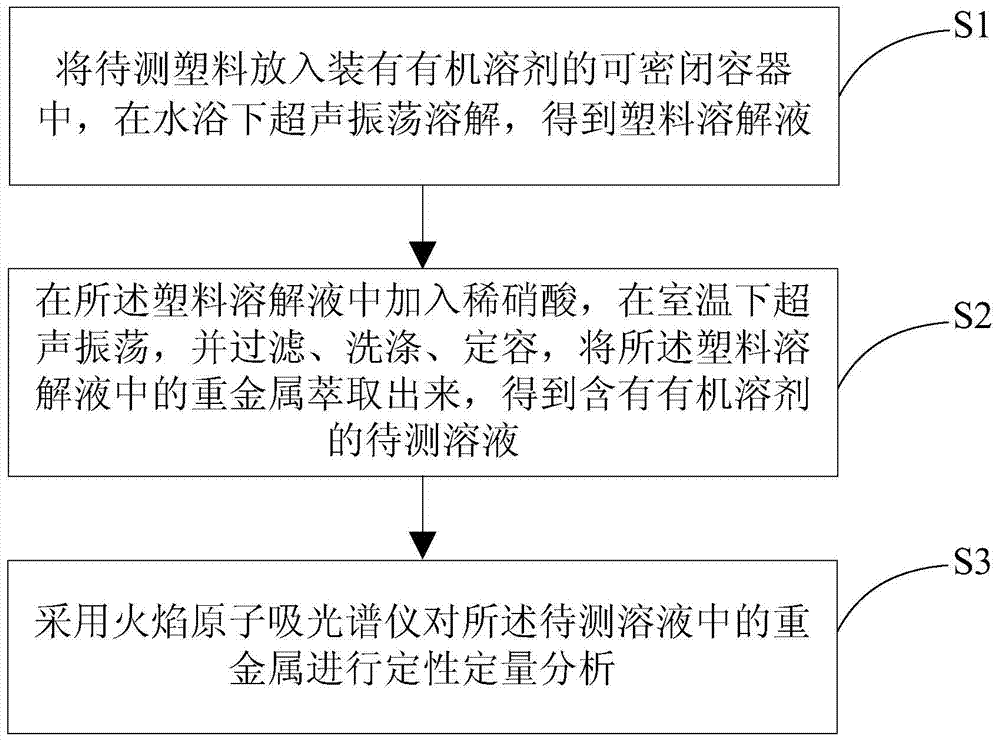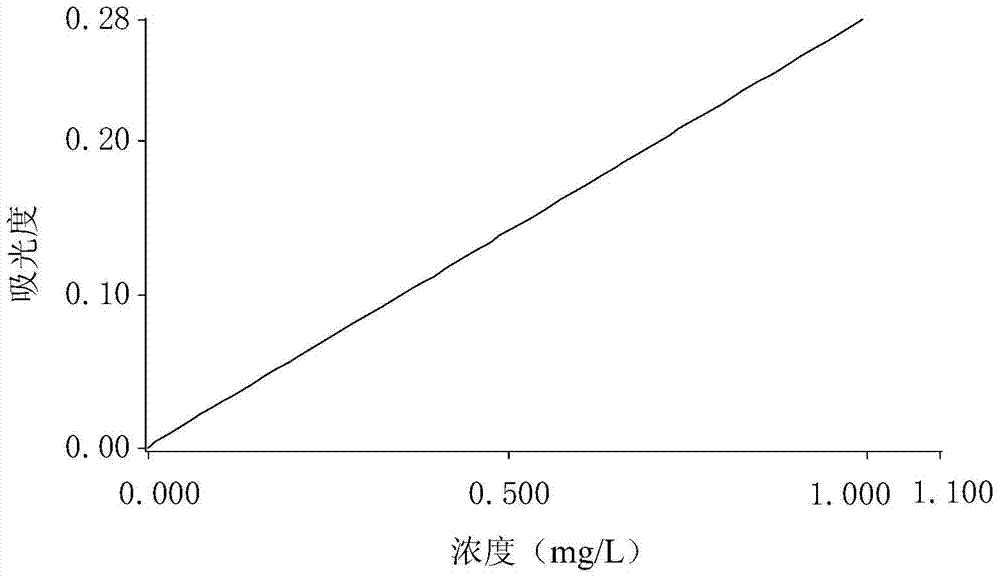Detection method of heavy metals in plastics
A detection method, heavy metal technology, applied in the field of heavy metal detection, can solve the problems of long digestion time, cross-contamination, non-discovery, etc., achieve good stability, high recovery rate, and ensure the effect of detection accuracy
- Summary
- Abstract
- Description
- Claims
- Application Information
AI Technical Summary
Problems solved by technology
Method used
Image
Examples
Embodiment 1
[0050] Crush 0.1-0.2g of the PVC or PE plastic sample to be tested and put it into a sealable container, add 10mL of tetrahydrofuran, and ultrasonically shake for 60min in a water bath at 80°C to fully dissolve the sample. Then, 10 mL of 20% (V / V) nitric acid was added to the obtained solution, and ultrasonic vibration was performed at room temperature for 30 min. Then the above-mentioned shaken solution was filtered and washed with 20% (V / V) nitric acid, and finally the volume was adjusted to 50 mL to prepare a solution to be tested containing an organic solvent.
Embodiment 2
[0052] Crush 0.1-0.2g of the PVC or PE plastic sample to be tested and put it into a sealable container, add 10mL of tetrahydrofuran, and ultrasonically shake for 45min in a water bath at 85°C to fully dissolve the sample. Then, 10 mL of 15% (V / V) nitric acid was added to the obtained solution, and ultrasonic vibration was performed at room temperature for 30 min. Then the above shaken solution was filtered and washed with 15% (V / V) nitric acid, and finally the volume was adjusted to 50 mL to prepare a solution to be tested containing an organic solvent.
Embodiment 3
[0054] Crush 0.1-0.2g of the PVC or PE plastic sample to be tested and put it into a sealable container, add 10mL of tetrahydrofuran, and ultrasonically shake for 30min in a water bath at 90°C to fully dissolve the sample. Then, 10 mL of 10% (V / V) nitric acid was added to the obtained solution, and ultrasonic vibration was performed at room temperature for 30 min. Then the above-mentioned shaken solution was filtered and washed with 10% (V / V) nitric acid, and finally the volume was adjusted to 50 mL to prepare a solution to be tested containing an organic solvent.
PUM
| Property | Measurement | Unit |
|---|---|---|
| width | aaaaa | aaaaa |
Abstract
Description
Claims
Application Information
 Login to View More
Login to View More - R&D
- Intellectual Property
- Life Sciences
- Materials
- Tech Scout
- Unparalleled Data Quality
- Higher Quality Content
- 60% Fewer Hallucinations
Browse by: Latest US Patents, China's latest patents, Technical Efficacy Thesaurus, Application Domain, Technology Topic, Popular Technical Reports.
© 2025 PatSnap. All rights reserved.Legal|Privacy policy|Modern Slavery Act Transparency Statement|Sitemap|About US| Contact US: help@patsnap.com



